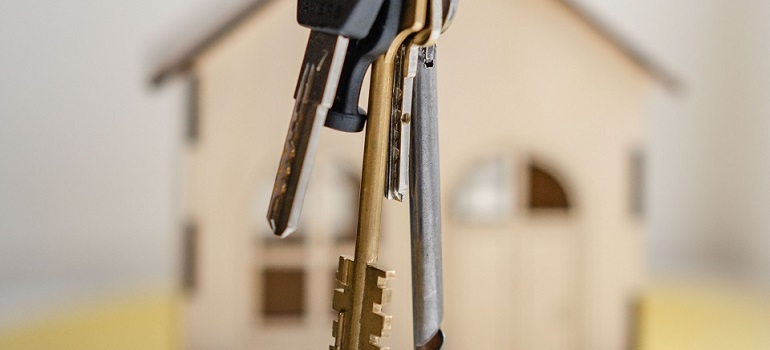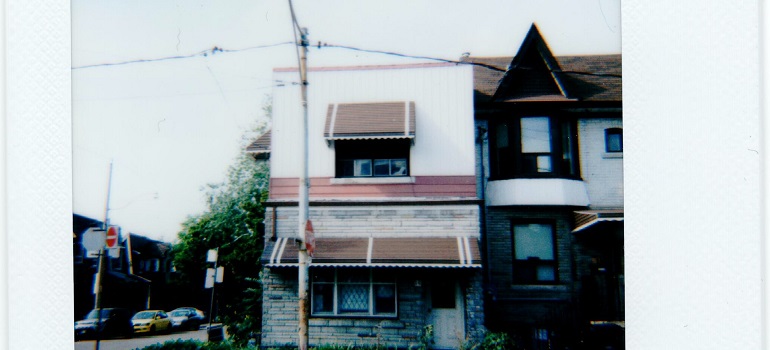Get Your Free Estimate Now
"*" indicates required fields
If you’re thinking about a move within the Greater Toronto Area, two spots likely on your radar are Etobicoke and Brampton. Etobicoke, a cozy part of western Toronto, offers luxury homes and proximity to water. Meanwhile, Brampton provides diverse housing options that attract families. Knowing the ins and outs of how real estate differs in Etobicoke and Brampton can give you an edge in making a wise decision. This guide offers valuable insights that help you navigate the unique features of each location. Curious about what makes each area tick? Professional Movers Canada is here to provide insight into essential factors like home types, average prices, and neighborhood vibes, guiding you closer to finding your dream home.
What makes Etobicoke unique
Etobicoke offers a mix of real estate options that fit a wide range of budgets and lifestyle needs.
- High-rise condos are prevalent, especially in the Humber Bay Shores area, where you can find luxury units with lake views.
- For a glimpse into tradition, older neighborhoods like Islington-City Centre are well-preserved, where charming bungalows and post-war homes are common.
- Mimico, another neighborhood, offers a different vibe, primarily featuring detached homes and thereby serving those who prefer a suburban atmosphere.
If you’re leaning toward this choice, you might find value in exploring the various moving companies Etobicoke has available. According to recent real estate data, the average home price in Etobicoke is around $1 million, which reflects its upscale offerings.
Market dynamics in Etobicoke
The real estate market in Etobicoke is quite active, often requiring buyers to make swift decisions. According to the Toronto Regional Real Estate Board (TRREB), properties in Etobicoke often sell within 20 to 30 days. So if you’re looking to buy, having your moving services Toronto companies provide lined up is a smart move. High demand usually drives up prices, particularly for homes near popular spots like Humber Bay Park or the Royal York subway station. The market also sees fluctuations throughout the year, with a surge of listings typically in the spring and fall. This seasonal uptick offers a broader selection for potential buyers, from compact condos to sprawling family homes. However, because homes sell quickly, you’ll want to keep an eye on new listings to snag your dream property.
Real estate investment in Etobicoke
If you’re considering an investment, Etobicoke has several appealing options. Condos in the area have seen a consistent appreciation rate of about 5-6% per year. Especially, condos near the waterfront or Humber Bay Park areas fetch high rental yields, sometimes upwards of 4%, making them attractive for those looking to invest in rental properties. If you plan to stage or renovate your investment property, you’ll find specialized moving supplies Toronto shops offer a variety of resources.

The optimal time for investing in Etobicoke tends to be during the winter months when the real estate market is less competitive. Lower competition often means you could negotiate a better deal. Furthermore, areas such as Mimico and Islington-City Centre are emerging as investor favorites, largely because of their strong community amenities and proximity to public transport. On average, a one-bedroom condo in Mimico can go for around $500,000, while a similar property in Islington-City Centre may cost about $550,000. For investors looking for long-term equity growth, single-family homes in older neighborhoods may be a wise choice. These areas are likely to see revitalization projects in the coming years, potentially increasing property values. Investment in multi-family units is also gaining traction due to Etobicoke’s growing population.
Zoning regulations in Etobicoke
In Etobicoke, zoning regulations are crafted to balance modernization with the preservation of the community’s look and feel. For instance, high-rise buildings are generally limited to Downtown Etobicoke and the Humber Bay Shores areas, where they are part of the existing skyline. The Humber Bay Shores Master Plan outlines height restrictions and land use to keep the community in sync with development goals. If you’re buying property in these high-rise zones, consult professional local movers Toronto residents opt for to assist with their relocation.
- Redevelopment projects are turning old industrial regions like New Toronto and Mimico into residential zones.
- The Mimico-Judson Secondary Plan aims to create mixed-use neighborhoods, but height and density limitations are still enforced.
- Natural areas like the Humber River Valley are subject to greenbelt laws, which prevent development to protect ecological features.
These regulations make it crucial to understand where you can build or renovate, especially if you own property in these designated green zones.
The appeal of Brampton real estate
Brampton has carved out its unique identity in the Greater Toronto Area’s real estate scene. Should you find Brampton aligns with your needs, it’s smart to consider movers Brampton for your moving requirements. Newer residential communities such as Springdale and Fletcher’s Meadow feature large detached homes, often exceeding 2,500 square feet, ideal for growing families. These areas also offer townhouses, allowing for more budget-friendly options. The average price for homes in Brampton hovers around $800,000, making it a somewhat more affordable option compared to Etobicoke. Schools and parks are plentiful in Brampton, adding to the allure for families.

Real estate differs in Etobicoke and Brampton in its dynamics
In Brampton, the real estate market is dynamic but has its own set of characteristics. New properties often get snapped up in less than a month, particularly in sought-after neighborhoods like Vales of Castlemore or Credit Valley. If you’re planning to move here, it’s wise to look into the range of movers near me Toronto ON has available. Unlike Etobicoke, Brampton’s market maintains a more consistent level of activity throughout the year. This is partly because Brampton has seen a steady influx of new residents, thereby keeping demand high. Large, newly-built homes are particularly popular and contribute to an average home price that is generally lower than in Etobicoke. This makes Brampton attractive to families looking for more space without breaking the bank.
Investing in Brampton
If you’re contemplating where to invest in real estate, Brampton presents excellent opportunities. The appreciation rate for detached homes in newer developments is around 7-8% per year. These homes, especially in areas like Springdale and Fletcher’s Meadow, are becoming increasingly popular among families. Prices for a standard four-bedroom detached home in these neighborhoods often start around the $900,000 mark. If you’re investing in such properties, you’ll want a seamless experience, so consider movers downtown Toronto for your relocation and staging needs.

Brampton is also high in rental demand, making it lucrative for buy-to-let investors. Rental yields for single-family homes can range from 3.5% to 4.5%, depending on the area and type of property. Areas close to educational institutions or corporate zones experience even higher rental demand, offering landlords a higher Return on Investment (ROI). A one-bedroom apartment in a prime location can fetch rents upwards of $1,500 per month, contributing to a stable income stream. The best times to invest in Brampton generally align with less competition in the market. Late winter and early spring present windows of opportunity where you can negotiate favorable terms. Investment in multi-family units is another trend to keep an eye on, given the city’s increasing population and demand for affordable housing options. With planned infrastructure upgrades and community development projects, property values in these areas are likely to rise in the long term..
Zoning regulations you should be aware of if you choose Brampton
Brampton’s zoning laws are tailored for a city in the midst of suburban expansion. The zoning categories here include:
- Residential
- Commercial
- Industrial
- Open Space
Each of these categories has their own sub-categories like R1 for detached dwellings or C1 for retail stores. One noteworthy area is the Central Area, which allows mixed-use development under the Central Area Community Improvement Plan. This permits both residential and commercial properties, providing versatility in property usage. For those interested in historical homes, Brampton has Heritage Conservation Districts like Churchville and Downtown Brampton. Here property modifications are tightly regulated to preserve architectural and historical integrity. The city’s official plan provides detailed zoning maps and outlines land-use designations, helping residents and investors alike.

How real estate differs in Etobicoke and Brampton when you factor in the taxes
Understanding property taxes is vital when choosing between Etobicoke and Brampton.
- In Etobicoke, which is a part of Toronto, the 2022 residential property tax rate stands at 0.5997041%. This rate is often considered lower than the average in the Greater Toronto Area. It’s calculated based on the current value assessment of the property, meaning a $500,000 home would incur about $2,998 in annual property taxes.
- On the flip side, Brampton has a higher property tax rate, set at 0.898781% for 2022. For a home valued at $500,000, this equates to approximately $4,494 per year. The higher rate helps the city fund its rapid growth and infrastructure projects. Besides the basic tax rate, Brampton sometimes applies special levies for community enhancements or new developments, which can increase the annual tax bill.
It’s not just about the rate itself; additional costs can come into play. For instance, Brampton has been known to impose special levies for localized improvements or new community centers. Meanwhile, Etobicoke might not have these additional charges but could have higher utility fees. Always make sure to factor these nuances into your budget when planning your move. Utilizing a reliable moving service will make it easier to focus on these financial details.
The real estate differs in Etobicoke and Brampton if you’re looking to buy a home
When buying property in Etobicoke, you’re entering a competitive market. A mortgage pre-approval is nearly always a prerequisite, given that a detached home’s average price is around $1.3 million as of 2022. Condos are a bit more affordable, averaging around $600,000. Closing costs are another factor to consider, usually adding an additional 1.5% to 4% of the property’s price. This includes the Ontario Land Transfer Tax, which in Etobicoke can range from $2,000 to $38,000 depending on the home price. You might also incur legal fees, which usually start at around $500. Preparing for these costs is crucial, and a mortgage calculator can be a useful tool. Given the costs and logistics involved, relying on moving services Toronto can ease your transition.

Buying process in Brampton
The Brampton real estate market demands quick action, particularly with an average detached home price of $1.1 million. Condos are slightly more budget-friendly, averaging $500,000. Development charges for new builds are a unique expense, sometimes adding an extra $60,000 to $80,000 to the property cost. First-time homebuyers may find some relief through various incentive programs like the Home Buyers’ Plan, which allows for a tax-free withdrawal from your savings plan up to $35,000. Make sure you’re pre-approved for a mortgage to act quickly on a home you desire. Like Etobicoke, closing costs usually add an extra 1.5% to 4% to the purchase price. For a smooth buying process, consider the array of movers near me Toronto ON has to offer.
The key ways how real estate differs in Etobicoke and Brampton
The choice between Etobicoke and Brampton can hinge on several factors, from property types to market speed. You now have a general idea about how real estate differs in Etobicoke and Brampton, which will help you weigh your options wisely. Etobicoke offers upscale condos and a faster-paced market, while Brampton provides spacious family homes and stable investment prospects. Each location has its zoning regulations and tax considerations to account for. By working with local real estate experts and opting for reliable movers, you gain a more nuanced understanding of each area. Armed with this information, you can confidently choose your next home, knowing it aligns with your lifestyle and financial goals. So go ahead and explore these diverse real estate landscapes. Happy house hunting!
Contact Us
Get access to a variety of moving and storage Canada solutions:

Contact Our team
Call Professional Movers Canada or fill out our free moving quote form.

Get Your Quote & Plan
Receive an obligation-free estimate and a detailed plan of action for your move.

Enjoy a Professional Move
Leave all the vexing tasks of relocation to our skilled Canada movers.